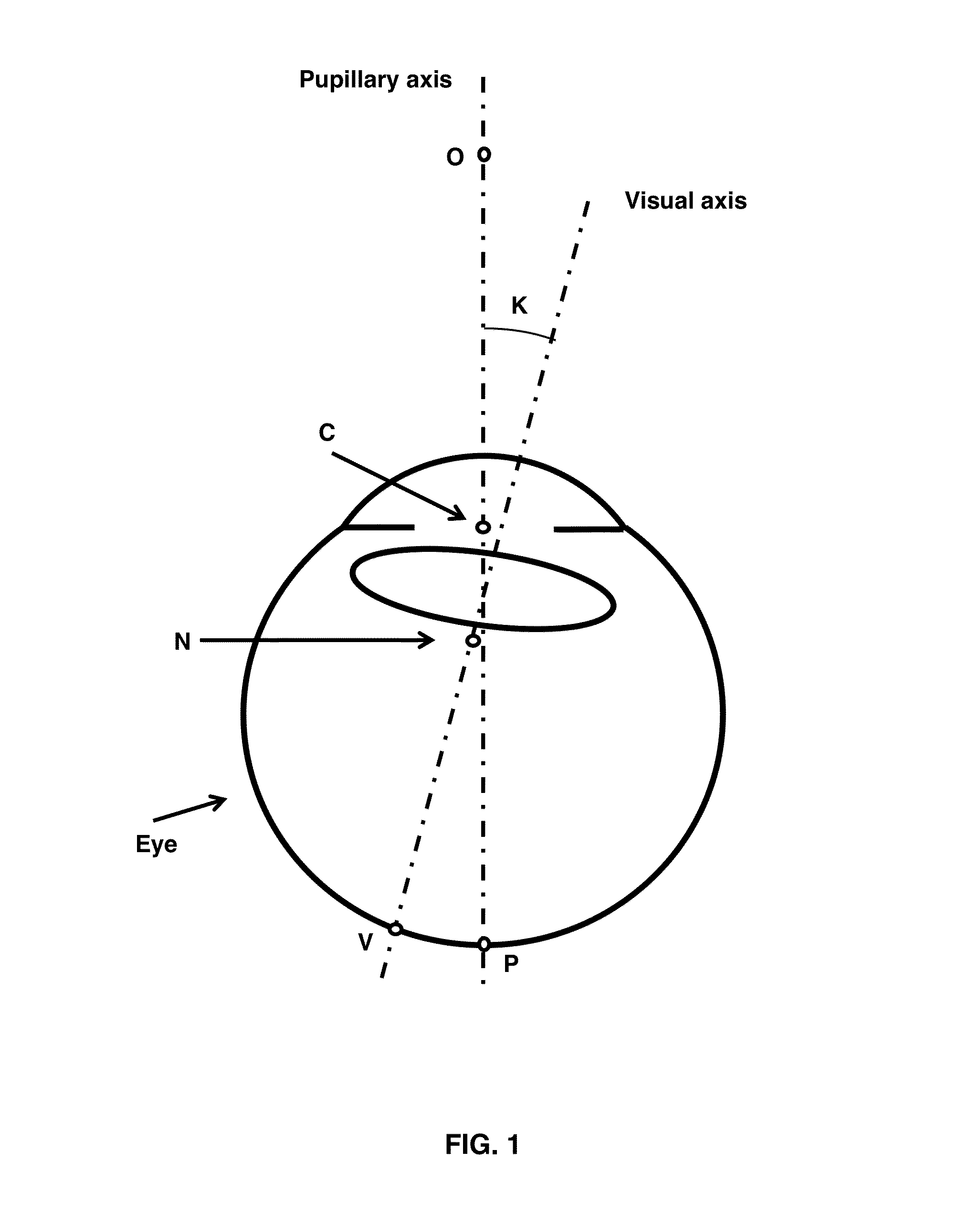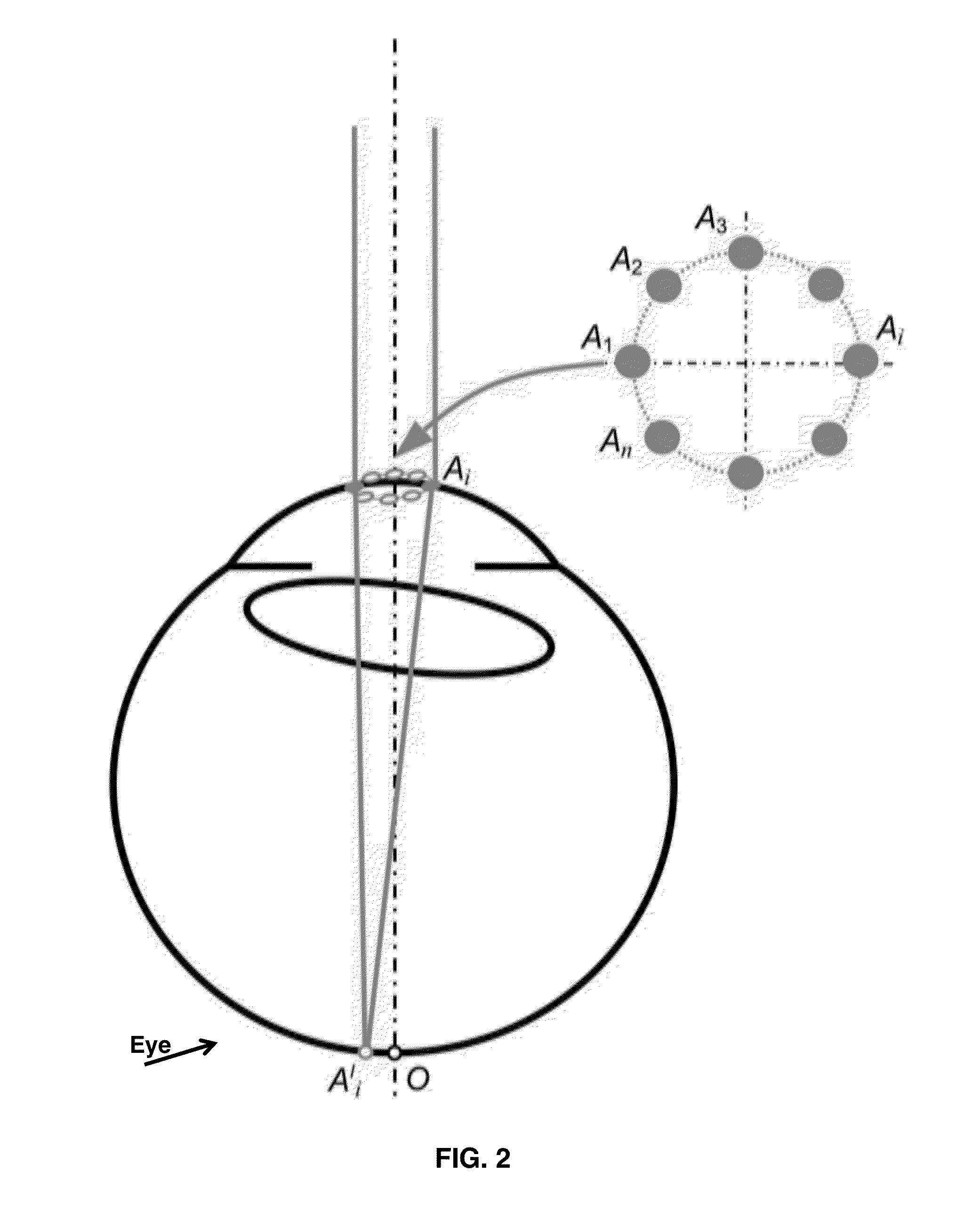Methods for objectively determining the visual axis of the eye and measuring its refraction
a technology of objective determination and eye, applied in the field of ophthalmic examination instruments, can solve the problems of no disclosure of how a new analysis pupil is determined nor how, and difficulty in integrating data from separate instruments,
- Summary
- Abstract
- Description
- Claims
- Application Information
AI Technical Summary
Benefits of technology
Problems solved by technology
Method used
Image
Examples
Embodiment Construction
[0027]As used herein in the specification, “a” or “an” may mean one or more. As used herein in the claim(s), when used in conjunction with the word “comprising”, the words “a” or “an” may mean one or more than one.
[0028]As used herein “another” or “other” may mean at least a second or more of the same or different claim element or components thereof. Similarly, the word “or” is intended to include “and” unless the context clearly indicates otherwise. “Comprise” means “include.”
[0029]As used herein, “papillary axis” refers to the perpendicular to the anterior corneal surface and crosses the center of the pupil.
[0030]As used herein, “line of sight” refers to the connection between the point target, to which the eye is oriented, and the center of the pupil.
[0031]As used herein, “visual axis” refers to an axis that also is directed on the point target crossing it, but inside the eye. The visual axis crosses the first nodal point, not the center of the pupil.
[0032]As used herein, “Purkin...
PUM
 Login to View More
Login to View More Abstract
Description
Claims
Application Information
 Login to View More
Login to View More - R&D
- Intellectual Property
- Life Sciences
- Materials
- Tech Scout
- Unparalleled Data Quality
- Higher Quality Content
- 60% Fewer Hallucinations
Browse by: Latest US Patents, China's latest patents, Technical Efficacy Thesaurus, Application Domain, Technology Topic, Popular Technical Reports.
© 2025 PatSnap. All rights reserved.Legal|Privacy policy|Modern Slavery Act Transparency Statement|Sitemap|About US| Contact US: help@patsnap.com



